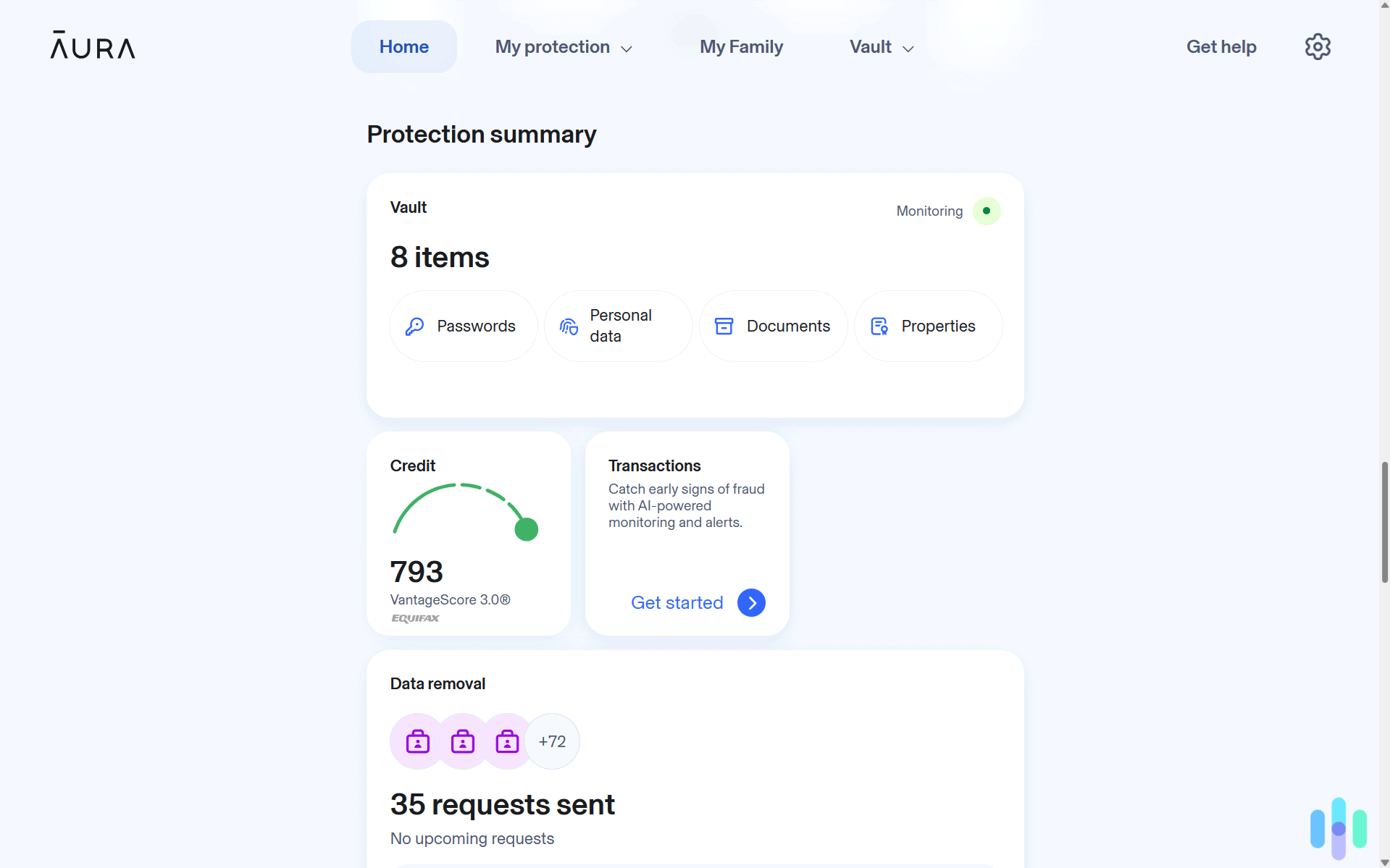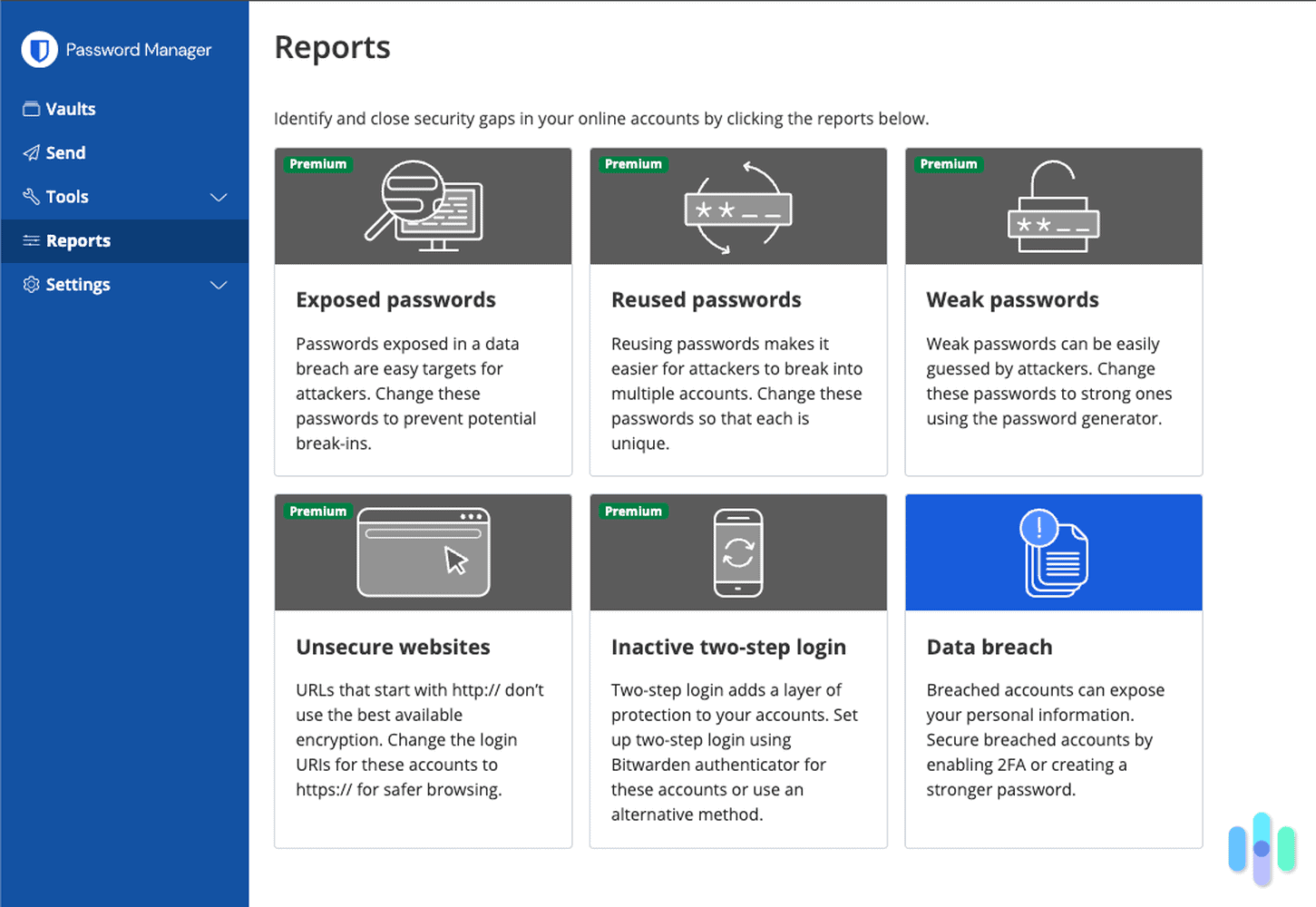
Dealing With False Alarms From ADT Home Security Systems
False alarms are a nuisance and a fright, but they could end up costing you your peace of mind too.
- Professional installation available for all systems
- 24/7 monitoring with 12 redundant centers across the U.S.
- Over 150 years of security expertise and innovation
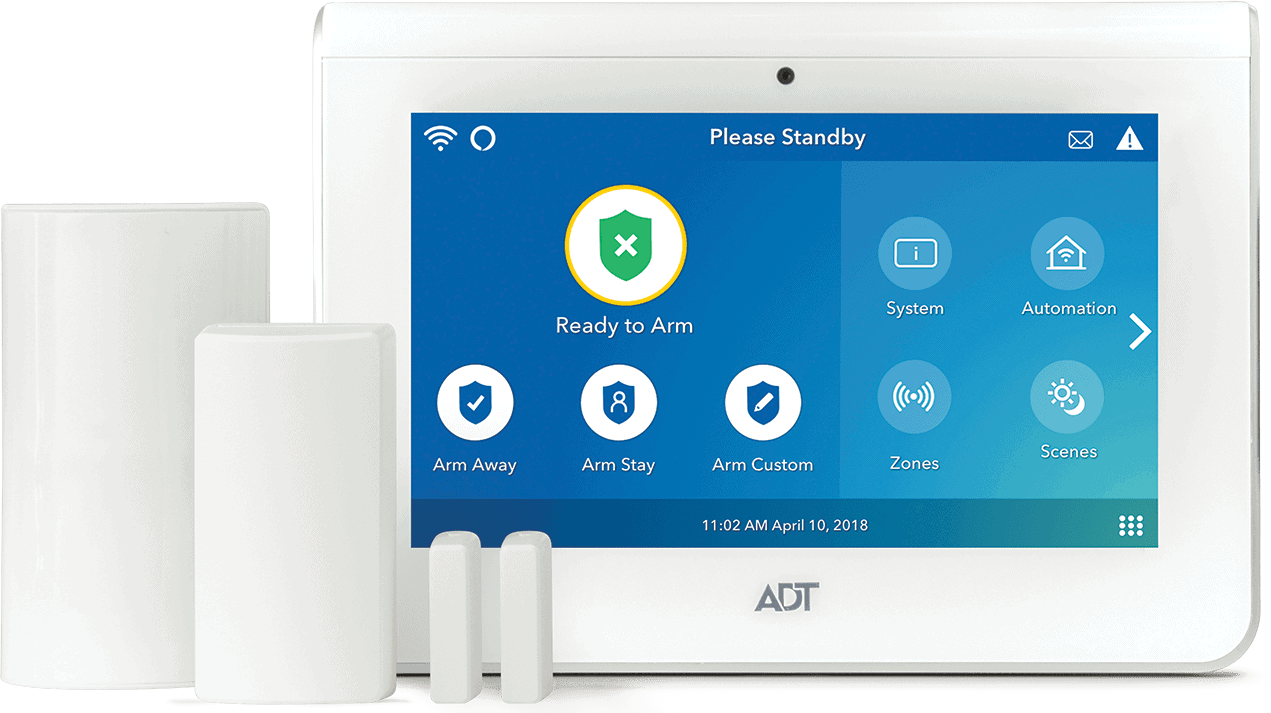
We’ve been testing security systems for over 10 years now, and one lesson we’ve learned is that false alarms are unavoidable. Statistics are limited, but industry estimates suggest that false alarms still account for 95 percent of all security system activations. The rest are real security events.
A few occasional false alarms might seem harmless, but frequent occurrences can lead to serious consequences. First, with your neighbors; alarm sirens are loud and can wake up the entire block. More importantly, though, false alarms can cost you. If you’re on a premium professional monitoring plan, your monitoring center will dispatch the police to your house. Depending on where you live, repeated false alarms (burglar or fire) will cost you typically between $75 and $250 for the first violation, with fines increasing for subsequent false alarms. False alarms are a massive drain to police department resources, so they have to recoup that somehow.
Did You Know: Not all ADT systems require professional monitoring. ADT Self Setup, ADT’s new DIY home security option, lets you choose between professional and self-monitoring. Read our hands-on ADT Self Setup review for our take on ADT’s much-hyped foray into DIY home security.
ADT Security System False Alarms: Common Causes
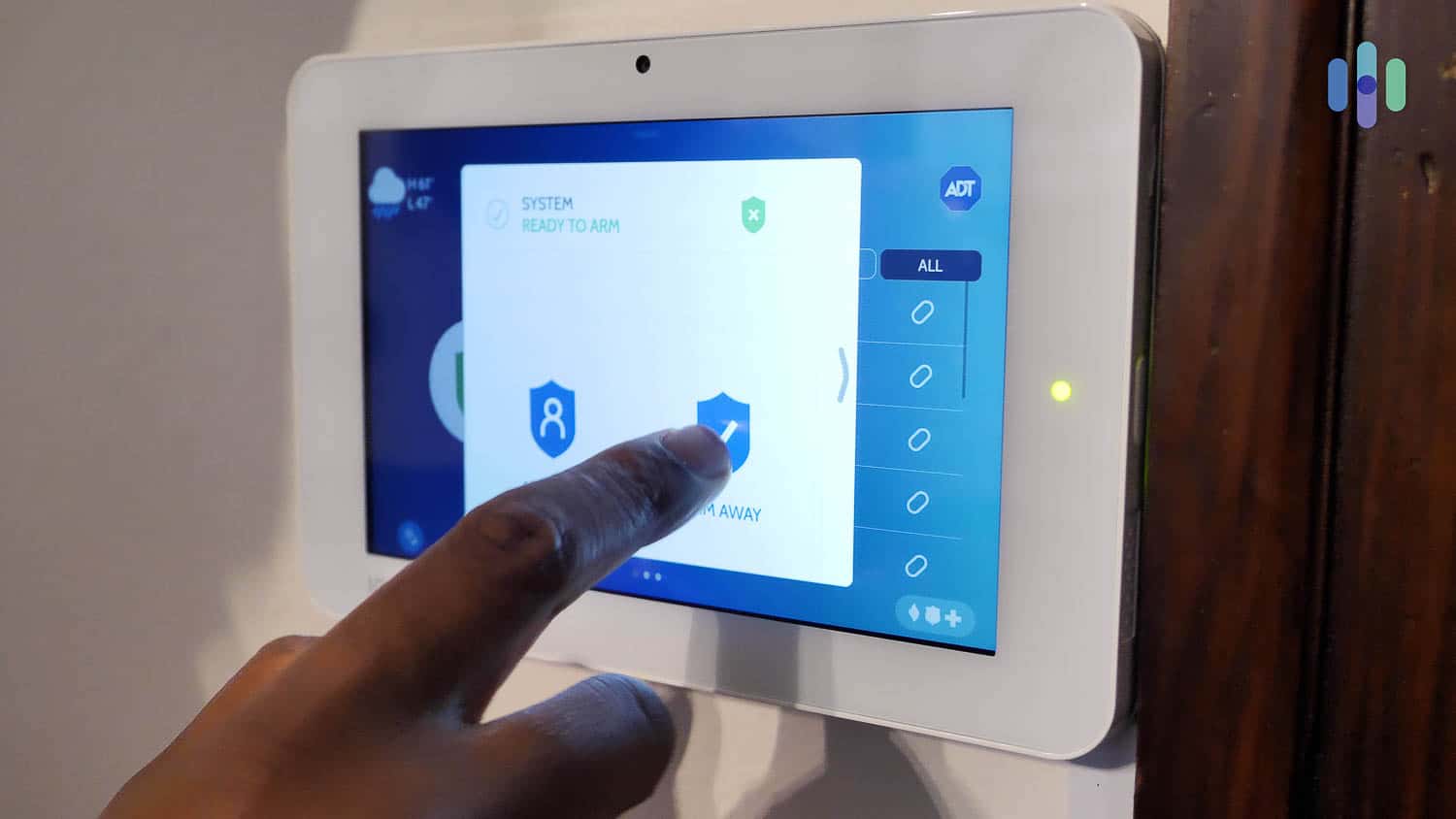
Your ADT system can trigger unexpectedly for several reasons. Some of them are the typical head-slappers. Your kids forgot the alarm was armed and barged into the kitchen. Bam! Or your house sitter fumbled the code. Hopefully, that won’t happen too often.
Alarm failures can also be caused by something more technical. For example, if there’s an issue with your control panel’s wiring or installation, it could trick the system into thinking that someone is tampering with the panel. Some ADT systems have Crash & Smash tamper protection, which would trigger an alarm at the first sign of tampering.
If you’re getting false alarms due to an installation issue, call ADT. All ADT systems are covered by a six-month money-back guarantee. They’ll attempt to fix the issue for free, but if they can’t, you’d be eligible to receive your money back.
As far as technical issues go — assuming your wiring isn’t to blame — there are three main categories to troubleshoot when your ADT home alarm or smoke detectors start crying wolf: motion sensor issues, door or window (entryway) sensor issues, and glass-break sensor issues. Let’s start with motion sensor issues because they’re pretty common.
Pro Tip: One advantage of a security system without professional monitoring is that the police won’t show up on your front porch when your alarm goes off by accident. Even if you subscribe to a monitoring plan, your service will sometimes try to confirm an actual emergency event before they dispatch the cops.
Motion Sensors
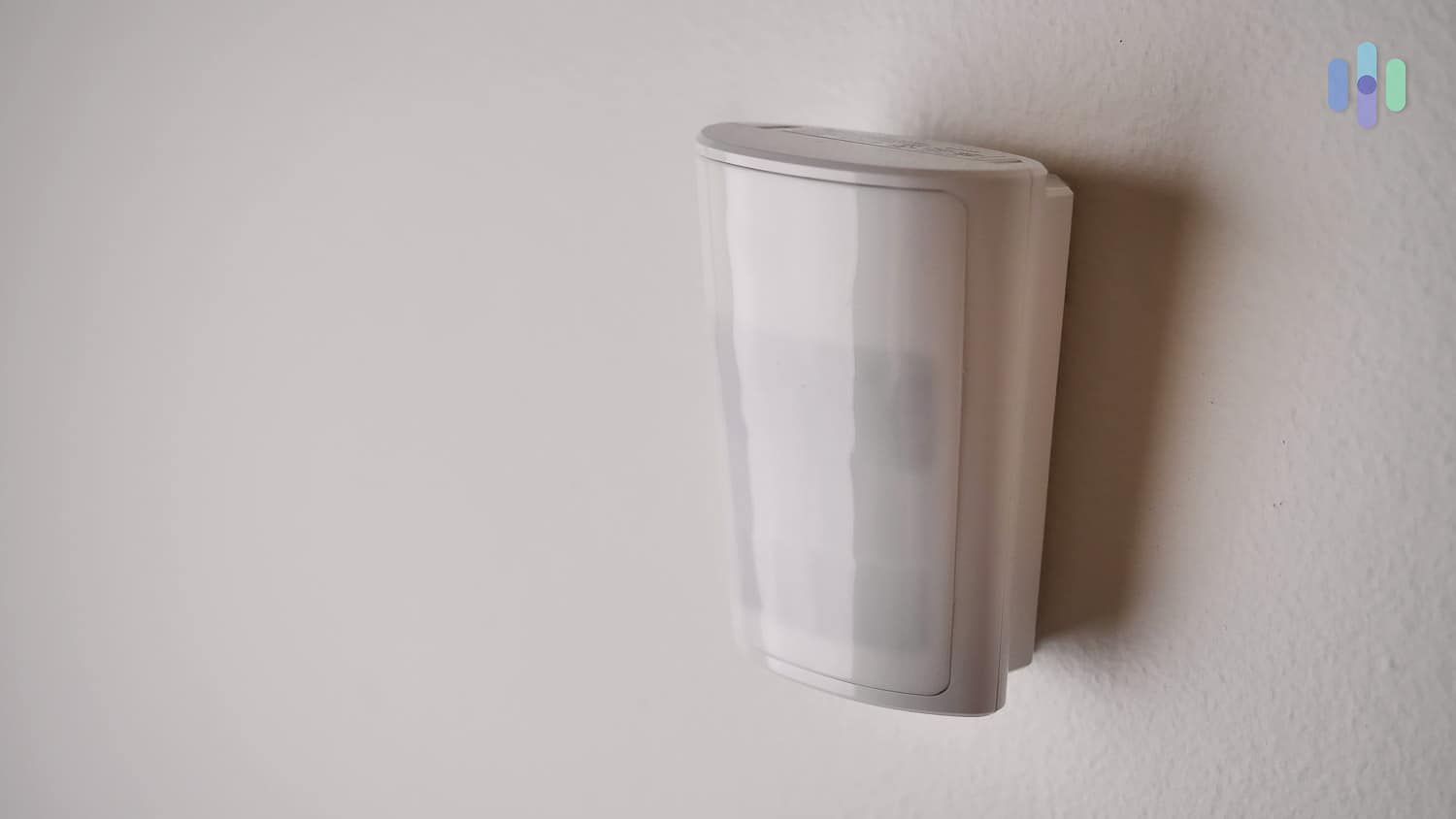
ADT’s motion detectors use passive infrared (PIR) sensors to detect suspicious movement in your house. They’re not only watching for movement, but they’re also looking for the movement of heat. What does that mean for your ADT burglar alarm?
If one of your motion sensors is going bonkers, and you’ve ruled out a low battery or a wiring issue, it could be that some random motion in the room is triggering it. Swaying blinds, a heavy pet, or a tiny critter crawling over the sensor are the usual suspects. But your problem could also be heat-related.
When indoor temperatures fluctuate dramatically, your sensor might misinterpret thermal changes as movement. A sudden blast from your HVAC system or direct sunlight hitting the sensor can also create false positives. Appliances that emit heat like refrigerators, AC units, and even lamps can also trigger false alarms. Here’s a deeper dive into how motion sensors work. Read on for some solutions to your ADT motion sensor woes.
Door and Window Sensors
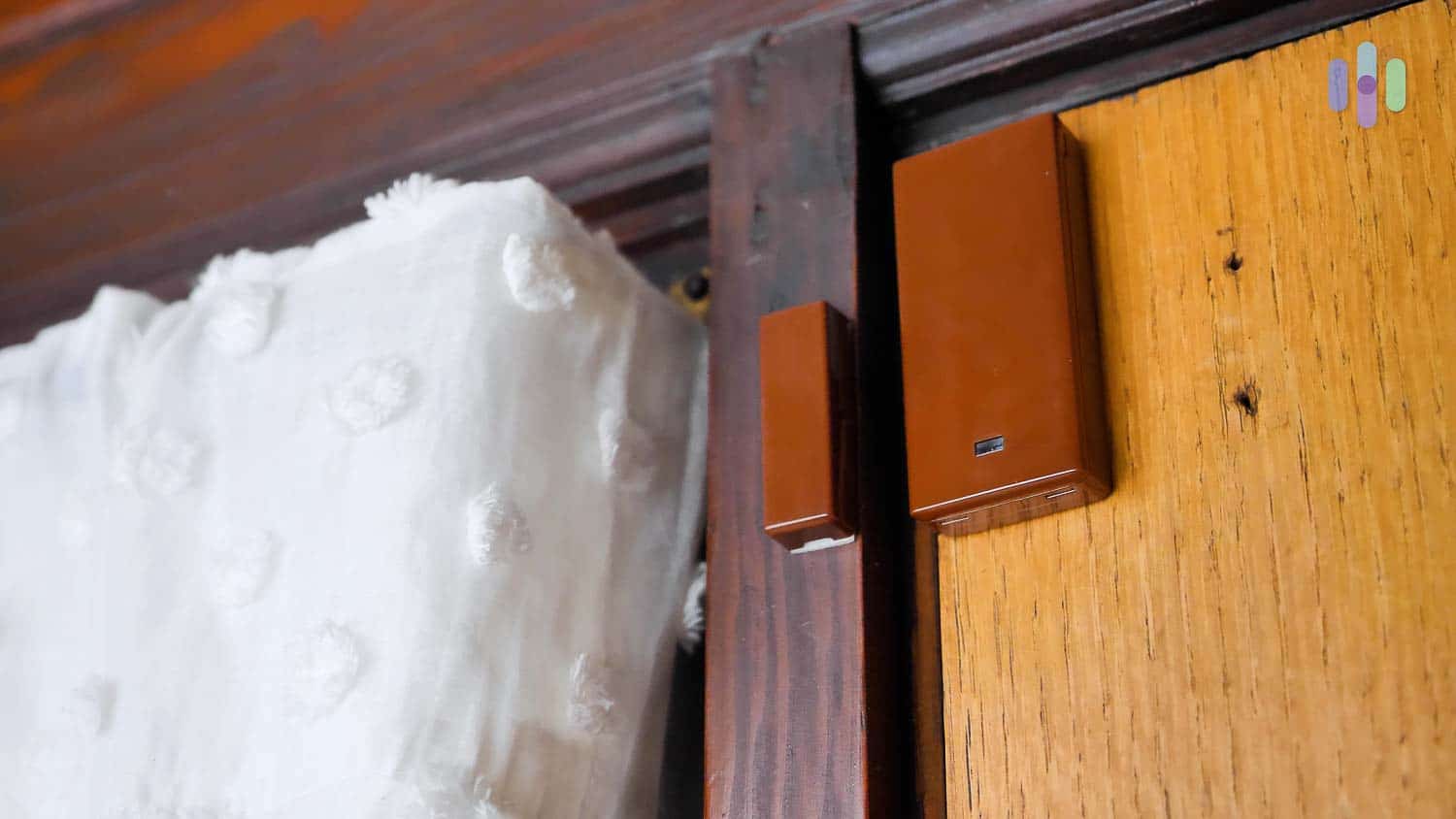
Diagnosing door and window sensor issues is a bit more straightforward than pinpointing the problem with a wonky motion sensor. Each entryway sensor comes with two parts: a magnet and a switch. As long as your doors and windows are closed tight and those two parts are properly aligned (see photo above), magnetization from the magnet closes a circuit on the switch. When the magnet is too far away, the circuit will open, triggering an alarm.
But you have an ADT security system. A professional electrician installed it. You shouldn’t be having technical issues like that, right?
Even with the best professionally installed home security systems — and, in our book, ADT is one of them — door and window problems can crop up that could affect your alarm. Homes settling and seasonal temperature changes cause wood to expand or contract. Even loose screws can gradually shift sensor alignment. It’s possible that your self-adhesive sensors have become unstuck. In any of those scenarios, you may be plagued by costly false alarms. So the first thing you should check is that the magnet and the switch are aligned when your doors are closed. They should be at most half an inch apart.
Glass-Break Sensors
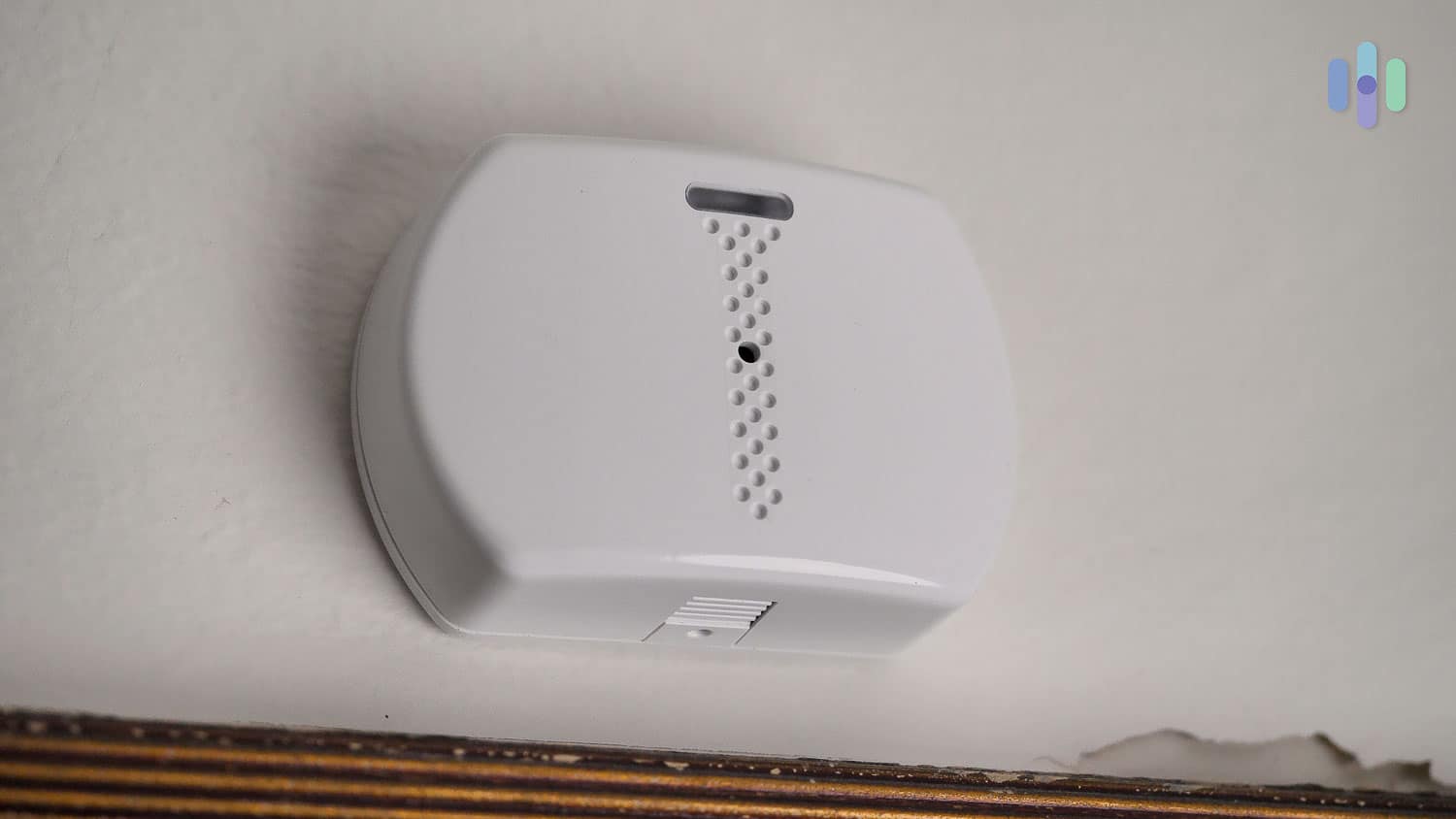
Glass-break sensors are the most temperamental equipment on this list — for a good reason. Noise trips them. Specifically, noise at the same pitch as glass breaking. That could be your dog barking, thunder booming, or even a TV explosion.
Glass-break sensors listen for specific frequency patterns between 3 to 5 kHz. This can overlap with common household sounds. We’ve dropped our keys on hard surfaces or clanged dishes while washing them, and it can sometimes trigger these sensitive devices.
Here are a few things to try:
- Adjust the sensitivity. ADT glass break sensors have four sensitivity settings.
- Move the sensor higher. If a dog’s bark is triggering it, moving it higher (above head level) could solve the issue.
- Replace the batteries. Like smoke alarms, faulty or old batteries can cause glass break sensors to malfunction. ADT’s glass break sensors typically have a three to five-year battery life under normal use
Pro Tip: Smoke isn’t the only thing that could set off your ADT smoke alarm. Just like we saw with infrared motion sensors, bugs nesting inside your detectors can also trigger your alarm. To avoid that, periodically dust and clean out your smoke detectors.
What to Do About ADT Security False Alarms
First things first: If your ADT alarm starts blaring and you’re sure it’s crying wolf, you should deactivate it. During our testing, we received a call from ADT within 30 seconds. Let them know the situation is under control. When DEFCON 1 is safely and quietly back at DEFCON 5, you can start troubleshooting. Here’s a pocket guide to ADT alarm hygiene.
Recognize Low Batteries
When your ADT batteries are low, you’ll see one of the following warnings on your hub: BAT, LOW BATT, or SYSTEM LO BAT. If one of your sensors is the issue, you should see the zone number as well.
Educate Kids and Visitors
House sitters, babysitters, grandmas, and even your own kids should at least be able to tell what an armed hub looks like. If you’ve got regular visitors or a guest staying for a while, you’ll want to lead them through the arming/disarming ritual before you let them loose in your home. As you no doubt know, once that high-pitched warning sounds, your fingers get wobbly and it’s hard to think straight.
Don’t Forget Your System Tests
Running a system test lets you test all your ADT sensors without triggering an actual alarm. We recommend doing it at least once every few months, or after a power outage or any electrical work.
If you’ve got the ADT+ app, open it and navigate to the System tab. Select System Test to begin.
You can also access Test Mode under the System settings. In both cases, you’ll need to specify a test duration.
Check Windows and Doors
You already know if your entryway sensor magnets aren’t lined up with their switches, the circuit is broken and your ADT security system thinks you have an intruder. Alignment issues aren’t blue-moon events. Windows buckle. Doors sag. You can nip this ear-splitting fiasco in the bud by checking on the state of your doors and windows every six months to a year.
Set and Position Your Motion Sensors Properly
A nearby ceiling fan or heater can trigger a sensitive motion sensor as easily as a heavy pet. The best home security systems we’ve tested this year let you calibrate their security cameras and motion detectors to avoid tripping false alarms. ADT’s motion sensors, specifically, are what we call “pet immune,” meaning they’re geared to ignore anything under 80 pounds.
If you have pets, we recommend positioning your sensors six to seven feet high on the wall. You should also angle them slightly downward to create a detection zone that pets can’t reach even when jumping.
FYI: Have any more questions about your ADT security system? Our home security pros may have answered them already.
Final Thoughts: Why You Should Avoid Setting Off False Alarms
Back in 2007, when the last major study came out, the DOJ reported that false alarms cost taxpayers nearly $2 billion per year in wasted police resources. They also cost homeowners plenty in yearly permit fees and fines that in some states started at 100 bucks per false alarm.
Financial damage aside, the heaviest toll this barrage of backfiring alarms has taken on our communities is in personal security. If a cop shows up at your door 12 times in a row because your babysitter tripped the alarm, do you expect them to rush over on the 13th, when an actual intruder has broken into your home?
Paying for permits is a nuisance, but feeling insecure in your own home — a home you already pay hundreds of dollars a year to protect with professional security services — because the police are tired of responding to false alarms? That’s a crying shame. It also happens to be the real reason we should all take care to avoid false alarms at all costs.
OK, lecture over.
Did You Know: In Phoenix, like many places in the U.S., you need a permit for a monitored alarm system. You get one free false alarm per year. Fines start at $96 for the second offense and increase to $106 for subsequent false alarms within a 12-month period.1
ADT False Alarm FAQs
-
How common are false burglar alarms?
According to an oft-quoted Department of Justice study (see footnote 1), between 94 and 98 percent of all burglar alarms aren’t actual security events.
-
Do I need a permit for my burglar alarm?
Generally, yes. For a closer look at burglar alarm permits, check out our updated guide to permits and home security systems.
-
What should I do if I experience a false alarm with my ADT security system?
If you’re sure it’s a false alarm, disarm your system. If you also subscribe to a monitoring service, alert them when they contact you.
-
Does ADT sell self-monitored equipment?
Yes. ADT Self Setup is ADT’s premium DIY security line.
-
City of Phoenix. (2025). Preventing False Alarm Systems.


